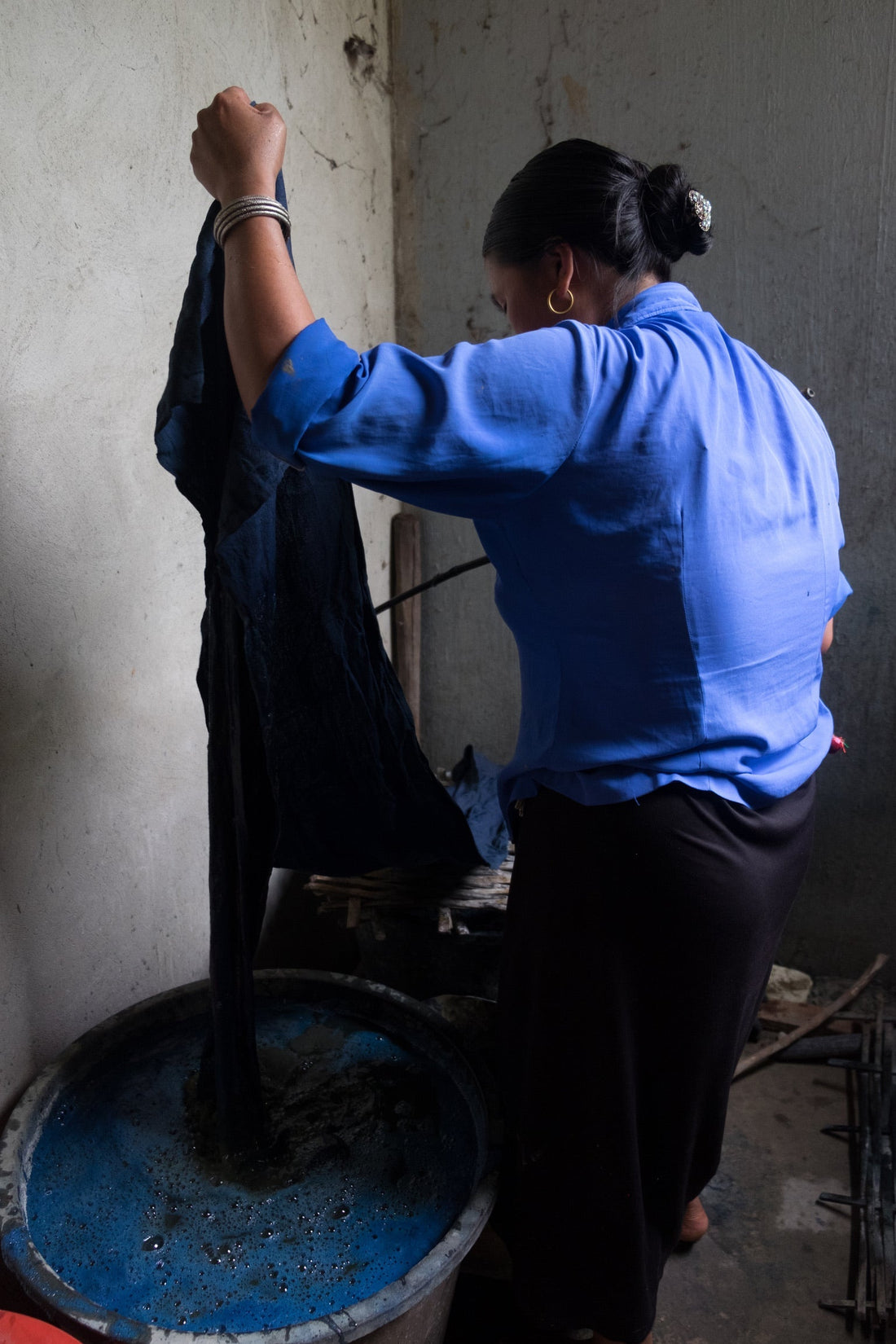
Organic Dyes - Indigo and Yam
The Dying Process


The process of dying with indigo is time consuming. The leaves of Indigo are grown, harvested, mixed with water and fermented into a paste during the warmer seasons. The indigo paste is then mixed with caustic lime and fire-ash water in a particular way. This requires much skill to balance the acidity and alkaline, creating an active dye for the cotton cloth to then be dipped into. Cloth must be repeatedly and carefully dipped, and then dried in the sunshine over a period of up to a week to achieve the desired pigmentation. It is this repetitive process which ensures the dye fixes correctly to the cloth, creating rich and vibrant blues. The alchemic process of dying is considered mystical and sacred – it is this which creates that quality that is not obtained from fast production.


Apart from indigo, Tamay & Me garments also come in a beautiful earthy, orangey colourway. This is produced primarily using dye yams (a member of the sweet potato family) to create a wide range of golden-orange to red tones. This traditional method of soaking the cotton in a mixture of mashed-up yams, guava, ‘chicken gizzard’ plant leaves, and wood from the ‘dragon’s blood tree’ creates a wonderful burnt-umber colour, a result of the high tannin in these materials. Tannin is an important part of dying materials naturally, ensuring that materials remain vibrantly colourful throughout their life (and wash) cycles.

The fabric is dipped into this cocktail multiple times (much like indigo), requiring manual ‘scrubbing’ between dips to ensure that the colour pigment is evenly spread throughout the material. The dyed fabric is then hung up to dry. The cotton emerges from the soaking process relatively pale in colour, it is only when exposed to the sun that the true earthy tones are revealed. The length of time in the sun, and the strength of UV and sunlight that the material is exposed to, impacts on the depth of the final colour. There is therefore variation in the tones from batch to batch of dying. This leads to the subtle differences in tones of Tamay & Me garments - a quality which makes them even more special and unique.

All dye yam materials dyed for Tamay & Me garments are sourced from Ntxhais – an incredible woman who deserves more than merely a mention, and whose story will be recounted in a later post. Through collaboration with Tamay & Me, Ntxhais has been enabled the financial security to continue her craft and production, and carry-on a deeply cultural, ancestral skill for generations to come.

Above is Yeun.
Yeun dyes almost all our indigo cloth. She is a master dyer and has now been working with us for almost 10 years. Yeun is well known for the quality of her 21 dip, near black, dyed cotton.
